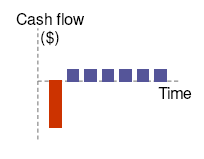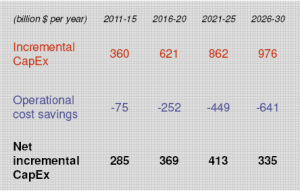We have sometimes been the bearers of bad news on jobs in the past. Not bad news, really. Realistic news. So excuse me for being a bit giddy at the sight of the latest piece of very realistic—and very good—news.
The EPA just released a new White Paper that turns out to be as green as it is red, white, and blue.
Lives and health at a bargain price
First, it starts with what really matters when considering the impact of the Clean Air Act—health and the corresponding social and economic benefits:
- 18 million child respiratory illnesses prevented in 1990 alone,
- 200,000 lives saved that year (160,000 in 2010),
- total benefits outpacing costs 30:1 since 1990.
These are the key figures we need to keep in mind. Always.
Healthy kids means a healthy workforce
For anyone who isn’t yet satisfied but worries about the economic impact of the Clean Air Act, there’s more good news:
Protecting children from neurotoxins leads to workers with higher IQs.
That should be an obvious statement. It also turns out to come with real economic benefits. The latest study by Harvard’s Dale Jorgenson et al shows that the Clean Air Act has boosted productivity and growth:
GDP in 2010 is 1.5 percent higher than it would have been without the Clean Air Act.
Again, that’s GDP. Hard economic growth. The number that measures everything except that which makes life worthwhile.
Clean and competitive
Lastly, the paper concludes with a look at competitiveness concerns. The verdict: the Clean Air Act does not harm competitiveness.
That’s not as strong as saying that the Clean Air Act improves U.S. competitiveness. Improving productivity also improves competitiveness, and combining the standard competitiveness arguments with Jorgenson’s productivity results may well show that to be the case.
But no one to my knowledge has done that yet credibly. (Of course, I’d love to be proven wrong on that point.) To the full credit of EPA and the credibility of its analysis, the paper does not go that far either.
The White Paper stays well within the mainstream of economic analysis of the Clean Air Act and bears plenty of good news for health, wealth, and the planet.
Read it at your own peril. It may well be the first piece of economic analysis that makes you giddy yourself.










 That sentence alone should occupy legal scholars for years to come. Most economists would only applaud. Getting 190-odd countries to agree on anything is extremely difficult. Unanimous consent is almost always out.
That sentence alone should occupy legal scholars for years to come. Most economists would only applaud. Getting 190-odd countries to agree on anything is extremely difficult. Unanimous consent is almost always out. First, a quick qualifier on costs. Yes, investing in low-carbon technology costs money upfront. It’s also true, though, that many investments in clean technology reap savings later.
First, a quick qualifier on costs. Yes, investing in low-carbon technology costs money upfront. It’s also true, though, that many investments in clean technology reap savings later. That still doesn’t make the transition a freebie, but it makes it much cheaper over time.
That still doesn’t make the transition a freebie, but it makes it much cheaper over time.